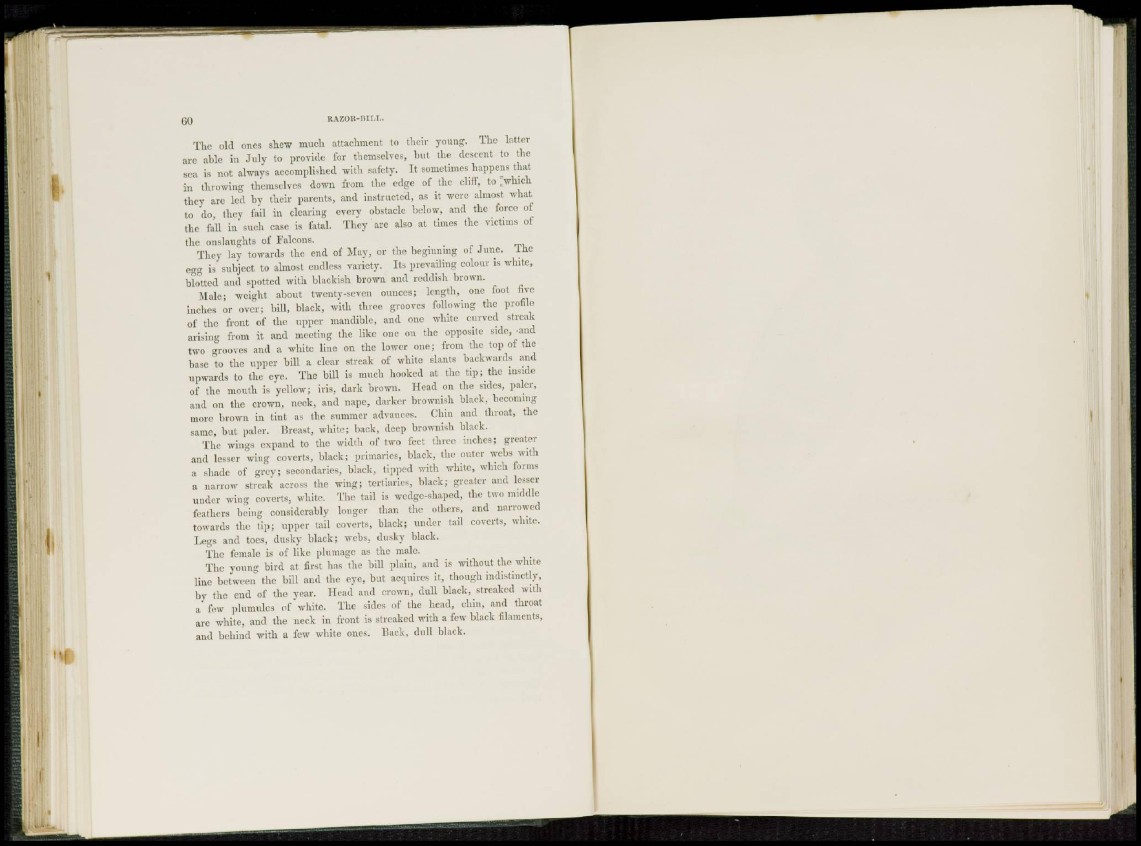
60 RAZOR-BILL.
The old ones shew much attachment to their young. The latter
are able in J u l y to provide for themselves, but the descent to the
sea is not always accomplished with safety. It sometimes happens that
i n throwing themselves down from the edge of the cliff, to "which
they are led by their parents, and instructed, as it were almost what
to do, they fail in clearing every obstacle below, and the force of
the fall in such case is fatal. They are also at times the victims of
the onslaughts of Falcons.
They lay towards the end of May, or the beginning of J u n e . The
egg is subject to almost endless variety. Its prevailing colour is white,
blotted and spotted with blackish brown and reddish brown.
Male; weight about twenty-seven ounces; length, one foot five
inches or over; bill, black, with three grooves following the profile
of the front of the upper mandible, and one white curved streak
arising from it and meeting the like one on the opposite side, -and
two grooves and a white line on the lower one; from the top of the
base to the upper bill a clear streak of white slants backwards and
upwards to the eye. The bill is much hooked at the tip; the inside
of the mouth is yellow; iris, dark brown. Head on the sides, paler,
and on the crown, neck, and nape, darker brownish black, becoming
more brown in tint as the summer advances. Chin and throat, the
same, but paler. Breast, white; back, deep brownish black.
The wings expand to the width of two feet three inches; greater
and lesser wing coverts, black; primaries, black, the outer webs with
a shade of grey; secondaries, black, tipped witli white, which forms
a narrow streak across the wing; tertiaries, black; greater and lesser
under wing coverts, white. The tail is wedge-shaped, the two middle
feathers being considerably longer than the others, and narrowed
towards the tip; upper tail coverts, black; under tail coverts, white.
Legs and toes, dusky black; webs, dusky black.
The female is of like plumage as the male.
The young bird at first has the bill plain, and is without the while
line between the bill and the eye, but acquires it, though indistinctly,
by the end of the year. Head and crown, dull black, streaked with
a few plumules of white. The sides of the head, chin, and throat
are white, and the neck in front is streaked with a few black filaments,
and behind with a few white ones. Back, dull black.